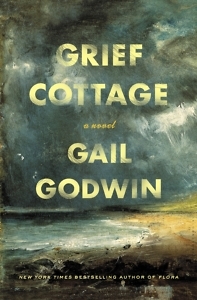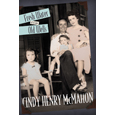The Purposes of a Ghost
An orphaned boy negotiates the legends of his past in Gail Godwin’s Grief Cottage
When eleven-year-old Marcus Harshaw—the empathetic, pensive narrator of Gail Godwin’s latest novel, Grief Cottage—arrives at his new home on a small island off the South Carolina coast, he finds that the pile-up of secrets which has crowded his young life so far shows no signs of clearing out. On the contrary, the people and places he encounters on the island carry their own mysteries, and he might never get the answers he craves.

Marcus has already had a crash course in secret histories. His mother, who ran away from home as a teen and changed her circumstances more than once, created an unusually intimate life for the two of them. When she dies unexpectedly, Marcus is left with few answers and fewer options. Even his surname—his mother’s former husband’s name, a stand-in for his real, absent father—is a cover story. With no other choice, Marcus moves in with his mother’s aunt, Charlotte Lee, his only living relative. She too has a fake last name, having chosen Lee as a surefire way to blend in with the traditional Southern families on the island. Over the decades, Charlotte has built a solitary life as a respected painter of local beach scenes. She guards her privacy fiercely, and Marcus’s sudden arrival makes for an awkward transition.
But the island holds enough mystery and legend to keep Marcus busy, and eccentric residents fill him in on the island’s history and inhabitants. Some—like Charlotte’s closest ally, Lachicotte—live there year-round. Others, like the ancient Coral Upchurch, come only for the summer, their paid staffs preceding them to air out their historically significant family mansions. The island is also home to nests of endangered loggerhead turtles, supporting a bustling conservation effort to protect hundreds of vulnerable eggs hidden below the sand, each waiting to “boil out” and make their perilous race to the open sea.
One local curiosity seizes Marcus like no other—the story surrounding a crumbling beach shack dubbed Grief Cottage. Wrecked during the infamous Hurricane Hazel in 1954, Grief Cottage has become a magnet for speculation and myth. Hazel’s only fatalities were a young boy and his parents—short-term renters whose names (and bodies) were never recovered. Aunt Charlotte has painted Grief Cottage dozens of times for her customers, but it’s the image of the nameless boy that Marcus can’t shake. As a local man tells him, “Folks can’t tolerate loose ends—they’ve got to tie up a story.”
 Sneaking into the condemned Cottage property, Marcus begins to have encounters with what he perceives to be this boy’s ghost, setting off a profound period of reflection and self-interrogation. What exactly has he seen? Who was this boy? Soon the practical questions are replaced by deeper inquiries into loss and the nature of grief. What do the living need from the dead? Perhaps, even: what do the dead need from the living? Marcus explores every facet of his brushes with the ghost boy, looking for clues about what these experiences signify and about the state of his own mental stability.
Sneaking into the condemned Cottage property, Marcus begins to have encounters with what he perceives to be this boy’s ghost, setting off a profound period of reflection and self-interrogation. What exactly has he seen? Who was this boy? Soon the practical questions are replaced by deeper inquiries into loss and the nature of grief. What do the living need from the dead? Perhaps, even: what do the dead need from the living? Marcus explores every facet of his brushes with the ghost boy, looking for clues about what these experiences signify and about the state of his own mental stability.
Known for her rich depictions of complicated Southern families, Godwin has added to her legacy with the memorable characters of Grief Cottage. Aunt Charlotte cuts an indelible figure: “a thin serious lady all in white, with beaky features and a Roman centurion haircut.” Living off her “fluke of a talent,” she teeters uneasily through her new role as a guardian. On the cusp of any revelation about her past or true connection with Marcus, she tends to hide away in her studio, surrounded by her work and an endless series of wine bottles.
Marcus makes an intriguing, somewhat restrained narrator, who is looking back on a painful childhood that he seems to view with equal parts tenderness and skepticism. He turns over his own motives, shames, and actions again and again—not with self-pity but to shed brighter light on his darkest choices. His compassion for the older women in his life leads him to air their secrets cautiously—secrets that may well have harmed him but have also defined him. Reading about the early troubles and sacrifices of his resourceful, unlucky mother, we want more information than Marcus will ultimately give us.
However, when it comes to getting at the deepest truths behind family mysteries, Grief Cottage strikes an admirable balance between revealing necessary morsels of character detail or backstory and acknowledging the nearly inevitable short stick most of us draw when we go looking for such answers. The dead can never give us enough to satisfy our questions. Godwin seems to be reminding us that that unquenchable search is a natural feature of our memory, and also of our grief for those we’ve lost.

Emily Choate holds an M.F.A. from Sarah Lawrence College. Her fiction has been published in Shenandoah, The Florida Review, Tupelo Quarterly, and The Double Dealer, and her nonfiction has appeared in Yemassee, Late Night Library, and elsewhere. She lives in Nashville, where she’s working on a novel.


